Steeped in rich history and architectural grandeur, Chepstow Castle stands as a testament to the enduring legacy of Norman influence in Britain. This 11th-century fortress, built by William FitzOsbern, has borne witness to countless clashes between Welsh and English forces, its strategic significance evolving over the centuries. Visitors can now uncover the castle’s secrets, from its intricate defense systems to the forgotten tales of bravery that once filled its halls. Enjoy the captivating narrative of Chepstow Castle and discover how its past continues to shape the present.
Key Points
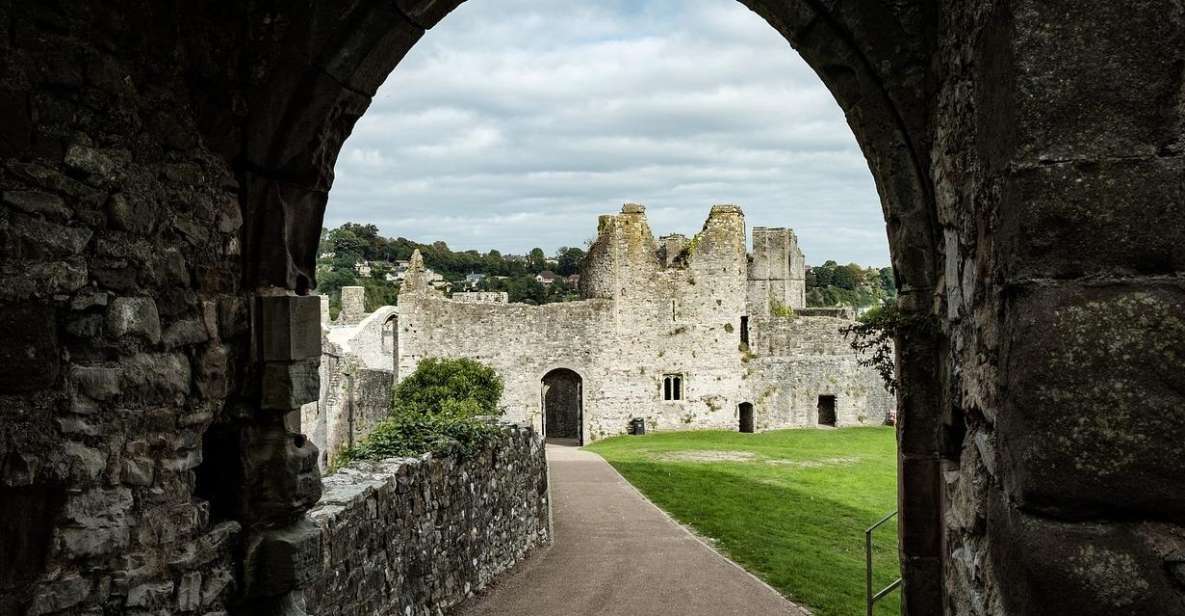
- Chepstow Castle’s origins date back to the 11th century, built by William FitzOsbern to solidify control and defend against Welsh incursions.
- The castle’s strategic location on the Anglo-Welsh border led to numerous clashes between Welsh and English forces, marked by fierce battles and changing allegiances.
- Chepstow Castle came under English crown control in the late 13th century, with key figures like Humphrey de Bohun and Roger Mortimer overseeing its administration.
- The castle’s architectural grandeur and enduring legacy reflect the ambition and power of its Norman creators, making it a testament to Norman architecture in Britain.
- Visitors to Chepstow Castle can uncover its intriguing history, from its lavish royal chambers and forgotten stories of bravery to the castle’s role during the English Civil War.
Castle’s Construction and Early History
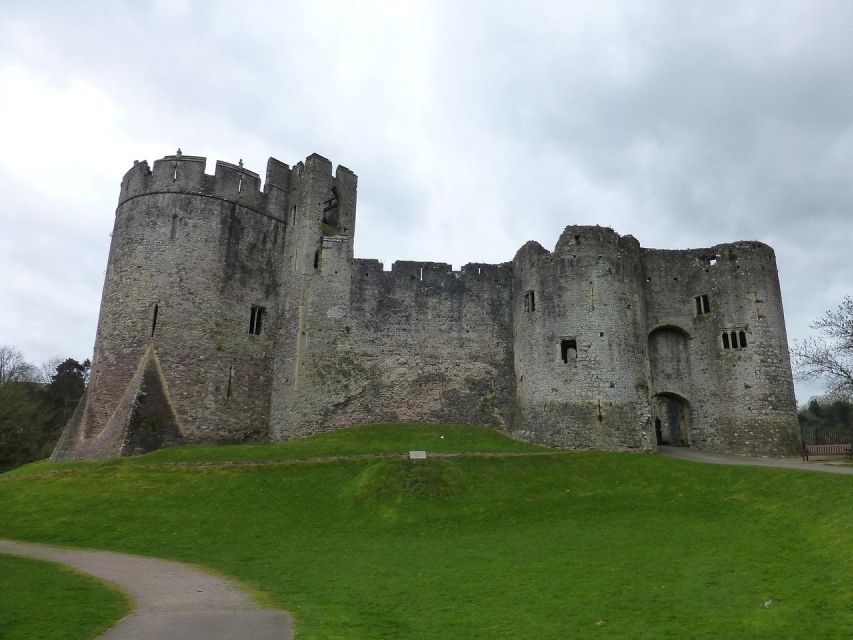
Chepstow Castle’s origins trace back to the 11th century, when William FitzOsbern, the Earl of Hereford, constructed the impressive fortification along the banks of the River Wye.
As a Norman lord, FitzOsbern built the castle to solidify his control over the region and defend against potential Welsh incursions.
Over the centuries, the castle witnessed numerous clashes between Welsh and English forces, reflecting the turbulent history of the Anglo-Welsh borderlands.
By the late 13th century, Chepstow had fallen firmly under English rule, standing as a testament to the enduring Norman legacy in Britain.
Today, the castle’s imposing stone walls and strategic riverside location continue to captivate visitors exploring its rich history.
Clashes Between Welsh and English Forces
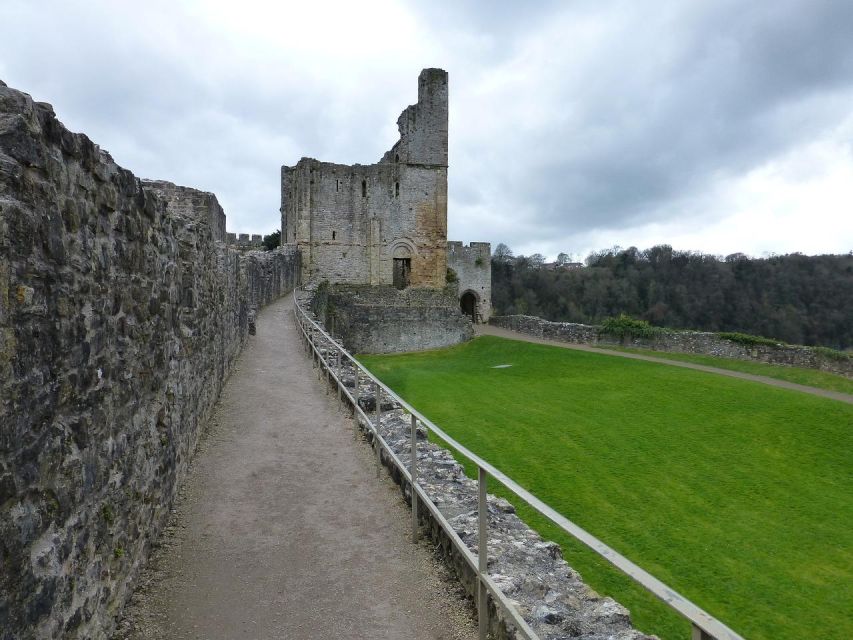
Throughout its long history, Chepstow Castle witnessed numerous clashes between the Welsh and English forces vying for control over the strategic borderlands. The castle’s position on the border between Wales and England made it a prime target, and it was repeatedly attacked and besieged by Welsh princes and English kings alike.
These conflicts often centered around the castle’s role in securing the border and protecting the surrounding lands. Despite its imposing defenses, Chepstow Castle wasn’t impervious to these attacks, and its history is marked by tales of fierce battles, sieges, and changing allegiances as the struggle for dominance in the region ebbed and flowed over the centuries.
Transition to English Crown’s Control
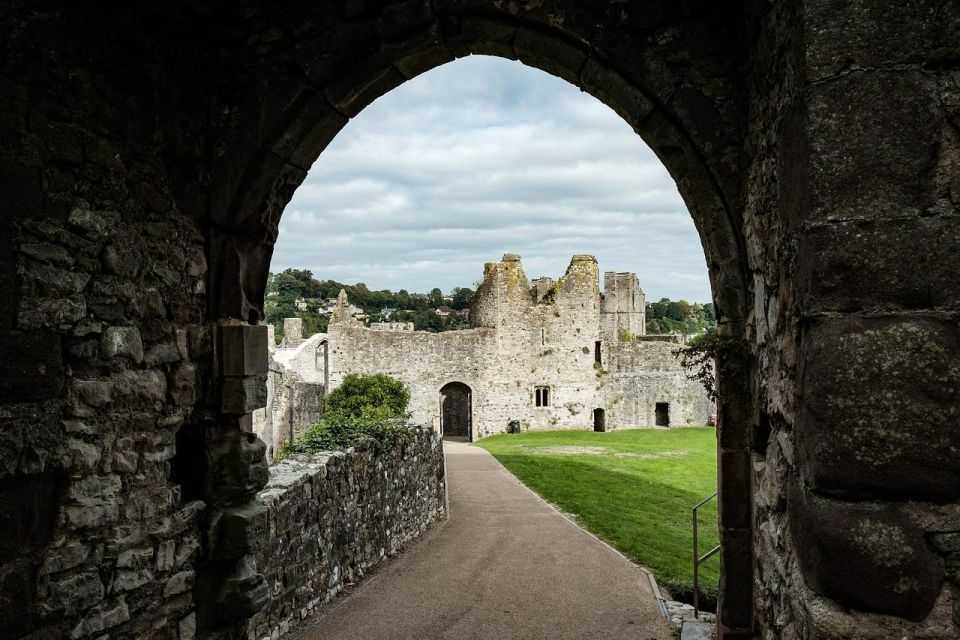
Eventually, the strategic castle at Chepstow came under the control of the English crown in the late 13th century, marking a significant shift in the power dynamics along the Welsh-English border. As the English solidified their grip on the region, the castle’s role evolved, transitioning from a flashpoint of conflict to a symbol of English dominance. The table below highlights key events and figures that shaped Chepstow’s transition to English control:
| Year | Event |
|---|---|
| 1270 | Chepstow Castle surrendered to King Edward I |
| 1277 | Edward I grants castle to Humphrey de Bohun |
| 1314 | Roger Mortimer becomes constable of the castle |
| 1372 | Castle passes to the Crown through marriage |
| 1403 | Henry IV grants castle to his son, the future Henry V |
This period marked a new chapter in Chepstow’s history, as the castle became firmly entrenched within the English realm.
Norman Castle’s Legacy in Britain
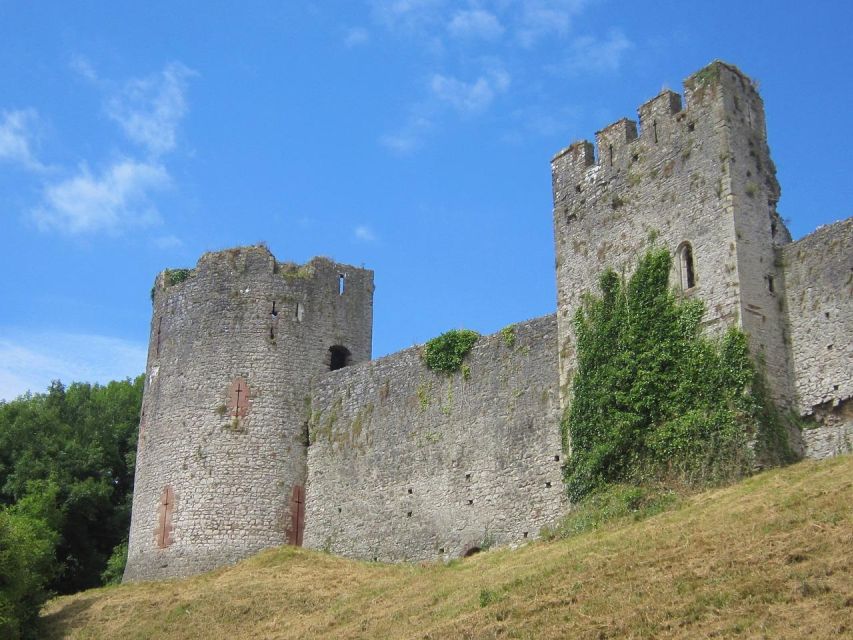
As a Norman castle legacy, Chepstow’s architectural grandeur and strategic significance have endured throughout the centuries, cementing its place as a prominent landmark in Britain’s rich history.
Built in the 11th century by William FitzOsbern, Earl of Hereford, the castle’s imposing fortifications and impressive design reflect the ambition and power of its Norman creators.
Over the centuries, the castle witnessed clashes between Welsh and English forces, before ultimately coming under the control of the English crown in the late 13th century.
Today, Chepstow Castle stands as a testament to the lasting impact of Norman architecture and military engineering, serving as a captivating testament to the region’s turbulent past.
Uncovering the Castle’s Secrets
The guided tour of Chepstow Castle unveils the captivating secrets that lie within its ancient walls, offering visitors a chance to explore the castle’s storied past. As you step through the grand entrance, your guide shares tales of the castle’s former residents, from noble lords to legendary figures. Discover hidden nooks and crannies, uncover the architectural evolution, and gain insights into the strategic role the castle played throughout its history.
| Secrets Uncovered | Highlights |
|---|---|
| Intricate defense systems | Forbidden passageways |
| Lavish royal chambers | Ghostly sightings |
| Forgotten stories of bravery | Siege tactics and warfare |
Chepstow Castle’s tour provides a immersive experience, inviting you to step back in time and unravel the mysteries that have shaped this iconic Norman stronghold.
Life Within the Castle Walls
Though the imposing walls of Chepstow Castle stood tall, they concealed a bustling world within, where the rhythms of daily life unfolded against a backdrop of grandeur and intrigue.
Within the castle, lords and ladies moved through the elegant halls, attending to matters of state and entertaining guests. Servants scurried about, tending to the needs of the nobility and keeping the castle functioning.
In the kitchens, cooks prepared lavish feasts, while in the courtyards, soldiers trained for battle.
Even the smallest corners of the castle were alive with activity, from the scribes in the libraries to the tradesmen in the workshops.
Castle’s Role During the Civil War
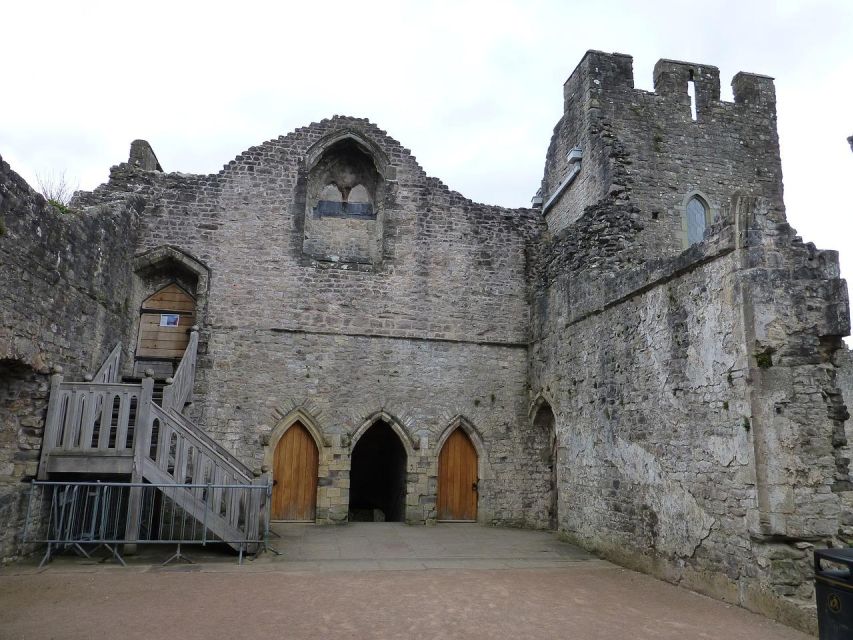
Perched atop the cliffs overlooking the Wye River, Chepstow Castle played a pivotal role during the English Civil War, weathering numerous sieges and changing hands between Royalist and Parliamentarian forces. As the conflict raged, the castle’s strategic location and imposing fortifications made it a coveted prize for both sides.
In 1645, the castle was captured by Parliamentarian troops after a three-week siege, dealing a blow to the Royalist cause in Wales.
Later in the war, Royalist forces reclaimed the castle, using its formidable defenses to hold off Parliamentarian advances for several more years.
Ultimately, the castle’s resistance was broken, and it fell to the Parliamentarians, symbolizing the waning power of the Crown in the region.
Practical Information and Meeting Point
Visitors can book the 1.5-hour private guided tour of Chepstow Castle starting from $166.49 per group of up to 10 people, with the option to reserve now and pay later and enjoy free cancellation up to 24 hours in advance.
The tour begins at the main entrance to the castle, located at the bottom of the path, at the edge of the car park.
During the tour, guests will uncover the secrets of the medieval castle, learn about life inside its walls, and understand its significant role during the Civil War.
Whether you’re a history buff or simply seeking to explore Britain’s Norman castle legacy, this guided experience promises an immersive and informative journey through Chepstow’s rich past.
Frequently Asked Questions
Is the Castle Wheelchair Accessible?
The castle has some wheelchair-accessible areas, but the uneven terrain and stairs may present challenges for those with mobility issues. It’s best to check with the tour operator about specific accessibility details before booking.
Can I Bring My Pets on the Tour?
I’m afraid pets are not allowed on the Chepstow Castle tour. The tour is designed to provide an immersive and educational experience for visitors, and having pets present could disrupt the flow and enjoyment of the tour.
How Extensive Are the Underground Tunnels at the Castle?
The underground tunnels at Chepstow Castle are not extensively explored. They’re believed to have been used for storage and defense, but their full extent and purpose remain largely unknown to visitors on the guided tour.
Are Guided Tours Available in Languages Other Than English?
Yes, the private guided tours of Chepstow Castle are available in languages other than English. Visitors can request tours in a variety of languages, ensuring a personalized and engaging experience for all.
Do Visitors Receive a Discount for Booking in Advance?
Visitors can book the Chepstow Castle tour in advance to receive a discounted rate. The price starts at $166.49 for a group of up to 10 people, with free cancellation up to 24 hours prior.
Recap
Chepstow Castle’s towering Norman architecture and storied past invite visitors to step back in time.
From its strategic vantage point, the castle’s dramatic silhouette has borne witness to centuries of conflict and conquest.
Exploring its labyrinthine passages and learning the tales of bravery that echo through its halls, visitors are left with a deeper appreciation for the castle’s enduring significance in British history.





